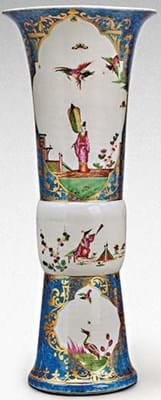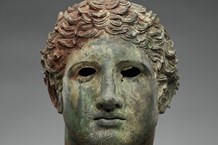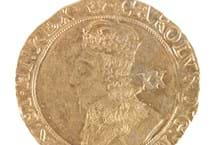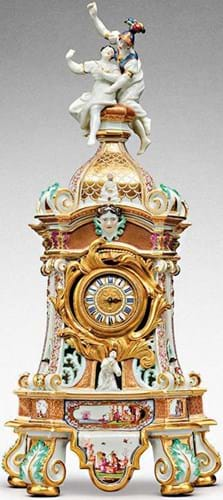
The 117 lots come from the impressive collection formed by Dr Franz Oppenheimer and his wife Margarethe in the early decades of the 20th century.
They were restituted earlier this year to their heirs more than 80 years after the Oppenheimers were forced to part with their collection.
Franz was a lawyer and part-owner and CEO of Emanuel Friedlander and Co, a private company that dominated the Silesian coal industry in the period before the Second World War.
Buying at a time when many important pieces were being deaccessioned from the Royal Collections in Dresden, he and Margarethe built up an impressive collection of Meissen, favouring particularly pieces in ‘chinoiserie’ taste, which was housed in their Berlin apartment.
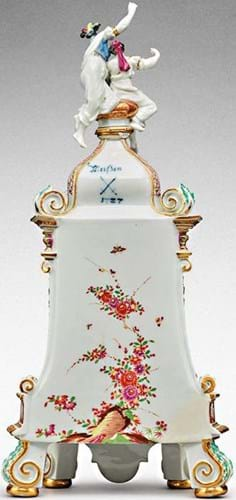
View of the Meissen clock case, dated 1727 to the reverse – estimate $200,000-400,000 in Sotheby’s sale.
Some of their acquisitions were recorded in a specially commissioned catalogue written by Ludwig Schnorr Von Carolsfeld but the Oppenheimers added more pieces after its publication in 1927.
Once the Nazis came to power, Franz was persecuted because of his Jewish origins, fled first to Vienna in 1936 then, in 1938, escaped via Hungary, Sweden and Colombia to arrive in 1941 in New York where they spent the remainder of their lives.
The Nazis confiscated everything from the Vienna apartment but the Oppenheimers successfully removed some of the most valuable porcelains before they fled.
The pieces in Sotheby’s sale were acquired from the Oppenheimers between 1936-39 by Fritz Mannheimer, a German-born collector who moved to Amsterdam to establish a branch of the Berlin-based Mendelssohn Bank in 1920.
The Amsterdam bank suffered a liquidity crisis in 1939, in the midst of which Mannheimer died of a heart attack. Faced with a huge debt, his executors liquidated his art collection as a contribution to the bank’s losses and in 1941 Kajetan Mühlmann acquired the collection for Hitler’s proposed Führermuseum.
Monuments Men
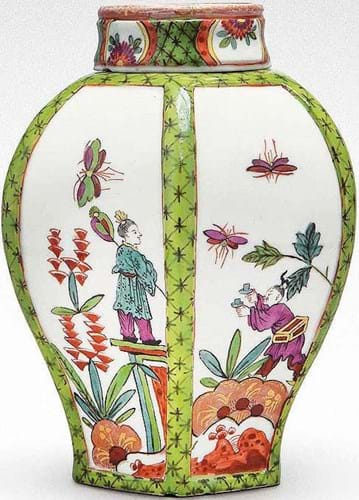
This rare 4½in (11cm) high Meissen hexagonal tea canister is decorated with chinoiserie motifs in a vivid palette between green ground diaper pattern borders. It has a crossed swords mark in blue and is dated to c.1730-35. Estimate $8000-12,000 at Sotheby's.
Mannheimer’s porcelain was eventually discovered by Allied Monuments officers in the salt mines in Bad Aussee.
It was repatriated to the Netherlands between 1945-49 but Mannheimer’s executors did not seek restitution as they would have been obliged to refund the price paid by the Fuhrer’s curators and it passed into Dutch State holdings with some of it transferred to the Rijksmuseum.
Earlier this year the Restitution Commission of the Netherlands accepted that the porcelain in this sale that had belonged to Franz and Margarethe Oppenheimer must be restituted to their heirs.



